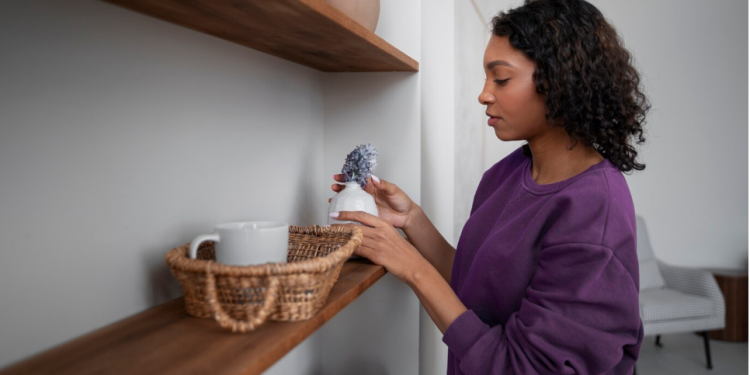Most Washington homeowners focus on the obvious entry points when trying to keep pests out, sealing cracks around windows and doors or fixing holes in screens. However, one of the biggest factors attracting unwanted visitors might be hiding in plain sight throughout your living spaces. The everyday items we accumulate and store in our homes can create the perfect environment for various pests to thrive undetected.
Understanding how household clutter contributes to pest problems is essential for maintaining a healthy, comfortable living environment in Washington’s unique climate. When you know what attracts these unwelcome guests, you can take proactive steps to make your home less appealing to them. Many Pacific Northwest homeowners are surprised to learn that their storage habits and organizational choices play a significant role in pest activity, often more than they realize.
If you’re already dealing with an established infestation, consulting with a local pest control company in Washington can help you develop a comprehensive treatment plan. However, addressing clutter issues should be part of any long-term prevention strategy, as even professional treatments may be less effective if the underlying attractants remain in place.
The Science Behind Pest Behavior
Pests are opportunistic creatures that seek out three basic necessities for survival. They need food sources, water access, and safe shelter where they can hide from predators and reproduce without disturbance. Cluttered areas provide all three of these essential elements in abundance, making them irresistible to various types of unwanted visitors.
When items are stacked, stored haphazardly, or left undisturbed for extended periods, they create dark, quiet spaces that many pests find ideal for nesting. These areas remain largely undisturbed by human activity, allowing pest populations to grow and establish themselves before homeowners even realize there’s a problem.
The warmth generated by electronic devices, appliances, and heating systems often concentrates in cluttered areas where air circulation is poor. This combination of warmth, darkness, and limited human interference creates microclimates that many pests find particularly attractive for breeding and establishing colonies.
Common Household Items That Attract Pests
Cardboard boxes are among the worst offenders when it comes to pest attraction. The corrugated design provides perfect hiding spaces, while the adhesive used in manufacturing can serve as a food source for certain insects. Cockroaches and silverfish are particularly drawn to cardboard storage, often laying eggs in the dark spaces between layers.
Stacks of papers, magazines, and books create similar problems. These materials absorb moisture from the air, creating humid microenvironments that many pests love. The organic compounds in paper and ink can also provide nutrition for various insects, while the layered structure offers countless hiding spots.
Textile storage areas, including closets packed with clothing, linens, and fabric items, attract different types of pests. Moths, carpet beetles, and silverfish all feed on natural fibers, while the dark, undisturbed nature of overstuffed closets provides ideal breeding conditions. Even synthetic fabrics can harbor pests when stored in cluttered conditions.
Electronic equipment and cables create warm hiding spots that many pests find irresistible. The heat generated by devices like computers, televisions, and gaming systems, combined with the maze of wires and cables behind entertainment centers, creates perfect harborage areas for cockroaches and other small pests.
High-Risk Areas in Your Home
Basements and attics top the list of problematic areas, as these spaces often combine poor ventilation with extensive storage. Washington’s high humidity levels, especially during the rainy season, make these areas particularly attractive to pests when combined with temperature fluctuations and stored items. The moisture retention common in Pacific Northwest homes creates ideal conditions for pest establishment.
Kitchen pantries and food storage areas become pest magnets when cluttered with expired products, opened packages, and items stored in non-sealed containers. Crumbs and food residue in these areas provide abundant nutrition, while the clutter offers hiding spots nearby.
Utility rooms housing water heaters, furnaces, and laundry equipment present unique challenges in Washington homes. The combination of warmth, occasional moisture from plumbing or laundry activities, and storage items creates environments that many pests find irresistible. The state’s damp climate makes proper ventilation in these areas especially important.
Prevention Through Organization
Regular decluttering represents your first line of defense against pest problems. Schedule quarterly reviews of storage areas, disposing of items you no longer need and properly organizing what remains. This routine maintenance disrupts potential pest habitats before they become established.
Proper storage techniques make a significant difference in pest prevention. Replace cardboard boxes with sealed plastic containers whenever possible, as these provide better protection against both pests and moisture. Ensure that containers have tight-fitting lids and are made from materials that pests cannot easily chew through.
Maintain clear pathways and spaces around stored items to improve air circulation and make regular inspections easier. When items are packed too tightly together, it becomes difficult to spot early signs of pest activity and creates the undisturbed conditions that many pests prefer.
Creating an Ongoing Maintenance Plan
Successful pest prevention requires consistent effort rather than occasional major cleanups. Incorporate clutter management into your regular cleaning routine, spending a few minutes each week addressing problem areas before they become overwhelming.
Focus particularly on areas where food, moisture, and shelter converge. Kitchen storage areas, bathroom cabinets, and utility rooms deserve extra attention due to their higher risk potential.
By understanding how clutter contributes to pest problems and taking proactive steps to address these issues, you can significantly reduce your home’s attractiveness to unwanted visitors while creating a more organized, pleasant living environment for your family.

















